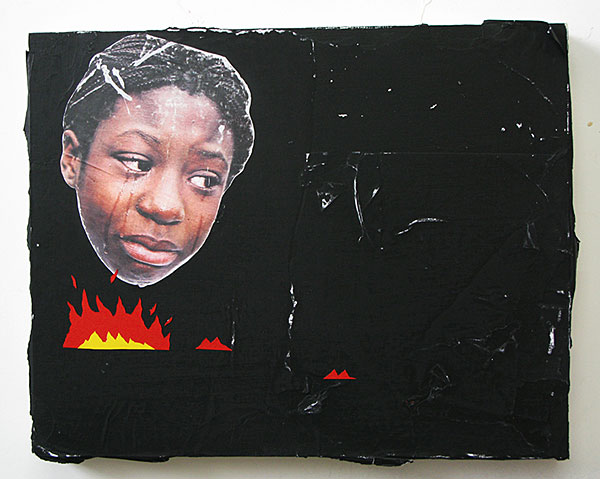
A recent article on The Atlantic’s cities blog lamented that “Chicago is losing its artists, to New York City and Los Angeles and San Francisco.” (I was quoted in the article, but this topic should be an ongoing dialog.) It’s true that people relocate, but there’s no mass exodus. If anything, the article exemplifies a chronic, anachronistic anxiety from some bygone era, perhaps the nineties, that ugly decade.
No amount of cheerful boosterism will bury the undead paranoia that Chicago is hemorrhaging its creative talent. Instead, I favor looking at the ways in which Chicago-based artists successfully sell their artwork in cities beyond Chicago, while happily keeping a life here.
While visiting New York City last week, I came across a show that featured works by four Chicago-based artists at the pristine Chelsea commercial space Tracy Williams Gallery. It’s not uncommon for Chicago-based artists to appear in mixed group shows in NYC, or to have solo exhibitions, but a purely Chicago-specific show is a peculiar coincidence.
“It just happened that way,” said Williams, who plucked the artists—David Leggett, Tim Nickodemus, Rachel Niffenegger, and Trew Schriefer—out of a recent trip to Chicago. In conversation with me, Williams was keen to downplay the Chicago connection even if her gallery’s press materials stress the influence of Chicago Imagists Jim Nutt and Karl Wirsum on the young artists’ works. Even the exhibition’s title—(I’m Your) Hoochie Coochie Man, a tune by Muddy Waters—is Chicago-specific.
There’s nothing particularly Midwestern about the artwork of Nickodemus, Niffenegger, and Schriefer, who each produce energetic, confidant, complex abstract artworks. And anyway, white cube gallery boxes tend to erase the particularities of place. Legget, however, creates work that prods his Chicago roots. One painting’s title, Chiraq (pictured above), is a conjunction of Chicago and Iraq, in reference to the city’s civil war-like violence. Will a collector buy it because it’s a timely political work, or because it’s an authentic document from the trenches?
While Williams didn’t want to emphasize the Chicago connections in (I’m Your) Hoochie Coochie Man, her press release openly thanks Tony Tasset (the Chicago artist famous for giant eyeball sculptures) and his wife Judy Ledgerwood, a Chicago-based painter and art professor at Northwestern University who exhibits regularly at Tracy Williams Gallery. Last year, Williams asked Tasset and Ledgerwood for recommendations of young Chicago artists. Niffenegger, for example, was a student at Northwestern. Those who make art in a vacuum will have difficulty emerging. Success in the art world, then, is a holistic affair.
Photograph: Courtesy of david legget


